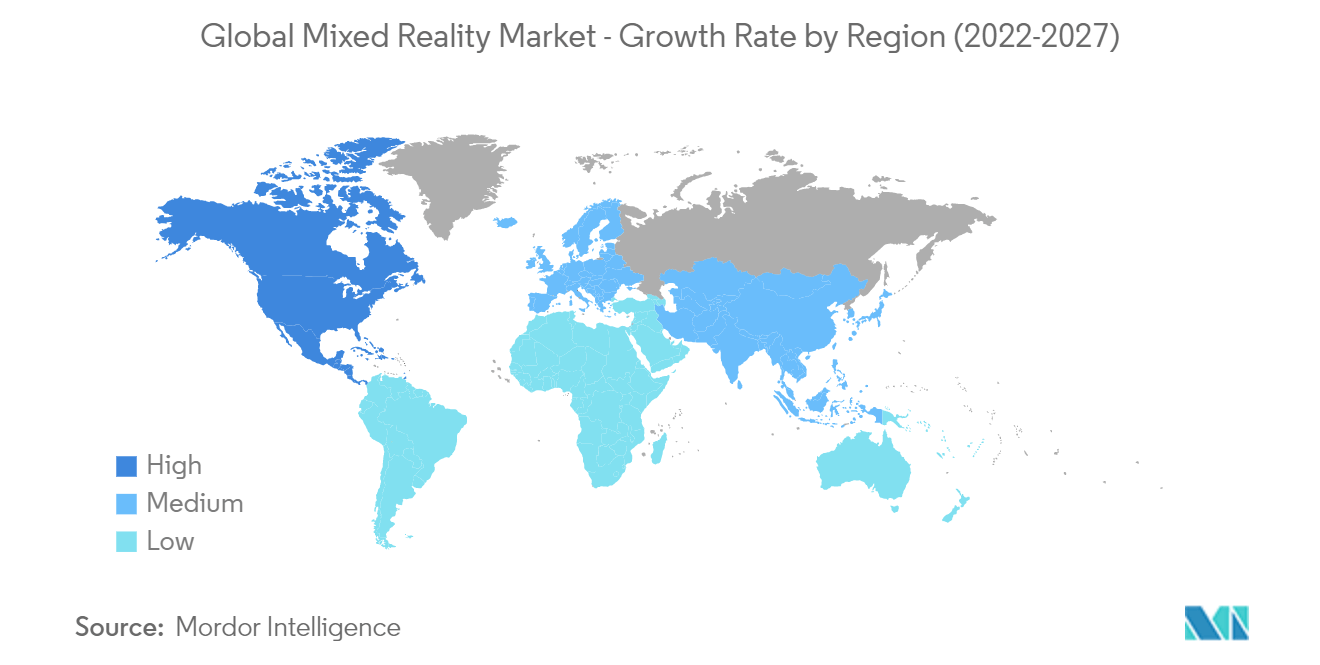Market Trends of Global Mixed Reality Industry
Education Sector will Hold a Significant Market Share
- With the use of Mixed Reality, classroom education can be interactive as MR can enable teachers to show virtual examples of concepts and add gaming elements to support textbooks. This will allow students to learn faster and memorize more information. The number of students experiencing difficulties concentrating and staying focused while learning is constantly rising. Admissionly shows that at universities and colleges, students face difficulties while focusing. Moreover, they face other mental health issues, like depression and anxiety.
- Microsoft stated that there is a 22% improvement in test scores among students using immersive technology and a 35% increase in student engagement and retention when learning with immersive and 3D technologies through mixed reality. Microsoft's HoloLens 2 offers several mixed reality apps, such as Fragments, RoboRaid, and ZARZL, and is more targeted at businesses and the education sector.
- Even at a much younger age, statistics show students experiencing difficulties in staying focused, with the Center for Disease Control and Prevention reporting that the diagnoses of ADHD among K-12 schoolers are continuing to rise, with over 5.7 million children currently diagnosed. In such scenarios, using MR technology during classes enables students to concentrate on literally what is in front of their eyes. In a way, they are forced to interact with their study mates and exclude any potential side stimuli. Furthermore, According to Statistisches Bundesamt, in the winter semester of 2021/2022, the share of universities of applied sciences in Germany was 50%.
- In May 2022, The Immersive Learning Research Program (ILRP), one of the largest research programs to date in immersive education, has attracted the participation of over 20 further and higher education institutions from the US, UK, EU, and Canada, according to Bodyswaps, a provider of immersive learning software that enables learners to practice soft skills in virtual reality (VR) with AI-enabled analytical feedback.
- In June 2022, A partnership between Microsoft and Maharashtra University of Health Sciences, Nashik, was announced for digital innovation and collaboration in healthcare services and medical education. The two institutions will collaborate on projects utilizing advanced medical technology, such as tech-driven remote healthcare solutions, mixed reality patient care, and medical education and training.
North America Holds the Major Share of the Market
- With many players in the North American region, the mixed reality market is expected to grow significantly in the forecast period. Also, these companies are investing extensively in product innovations and strategic partnerships. For instance, in May 2021, CAE USA was selected for a prototype project to develop an HH-60W virtual/mixed reality aircrew trainer.
- Additionally, Canada-based Arvizio introduced version 2.0 of its Mixed Reality (MR) studio, an enterprise-level solution designed to provide multi-user and multi-site mixed reality experiences. The company announced the integration of its MR Studio with Autodesk BIM 360 and A360 applications to leverage the Forge API to convert seamlessly and import models created with design tools on Magic Leap, Microsoft HoloLens, mobile AR devices, and virtual reality headsets.
- In February 2021, Microsoft launched HoloLens 2, specially designed for industrial applications. CAE Inc., a Canadian manufacturer of simulation technologies, opted for Microsoft HoloLens for its subsidiary CAR Healthcare to deliver training solutions for up to 11 learners simultaneously by using mixing reality technology.
- According to Statistics Canada and World Bank, 12.31% and 16.63% of Canada and the United States population will be 65 or above in 2020. Also, Rockwell Automation mentioned that over 25% of its workforce are 55 years or above, and their jobs are not actively pursued by the younger generation, creating a skill gap. This gap can be filled by using mixed reality headsets to train safely in a digital environment.
- The North American region is one of the highest spenders on its military and defense. The United States, which spends around USD 14 billion a year in digital training of the Army, with a prime focus on military innovation, collaborated with Microsoft for its MR headsets HoloLens, to enable the Army to detect enemies while on the battlefield. Also, in 2021, Microsoft was awarded over USD 20.8 billion worth of US Army contracts for its Hololens.




